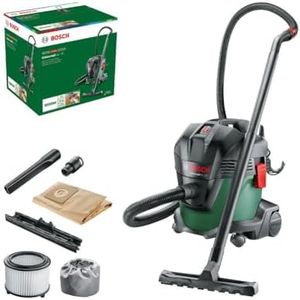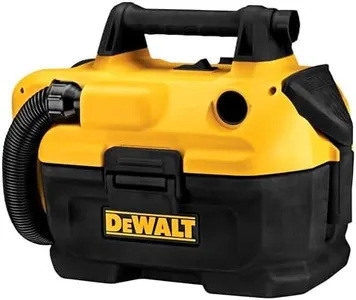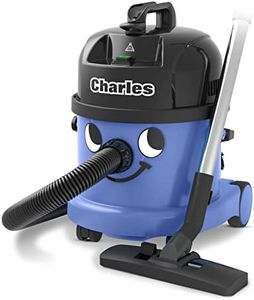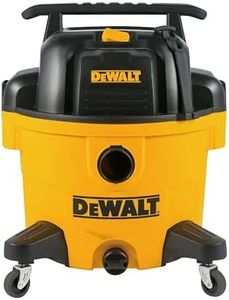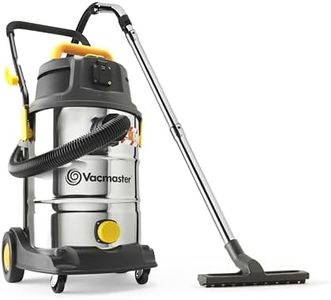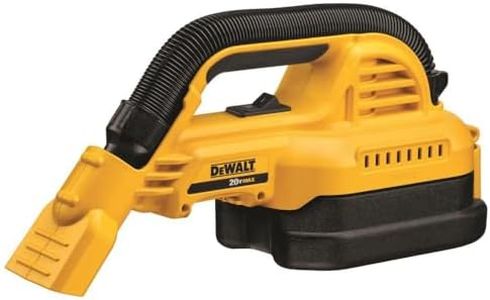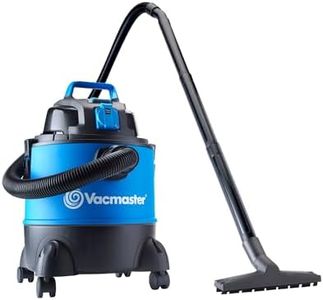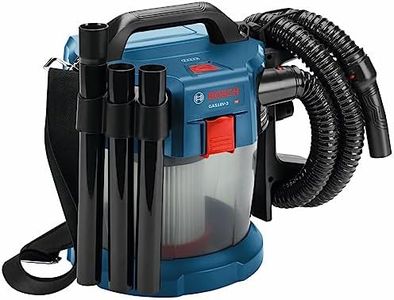We Use CookiesWe use cookies to enhance the security, performance,
functionality and for analytical and promotional activities. By continuing to browse this site you
are agreeing to our privacy policy
10 Best Shop Vacs
From leading brands and best sellers available on the web.Buying Guide for the Best Shop Vacs
Choosing the right shop-vac is all about understanding your cleaning tasks and knowing which features will make the job easier and more effective for you. A shop-vac, also known as a wet/dry vacuum, is designed for tough jobs that standard vacuums can't handle—whether it's heavy debris, water spills, or workshop dust. To pick the best fit, you’ll want to consider where and how you’ll use it the most: Is it for big garage projects or quick car cleanups? Focus on matching capacity, power, and features with how frequently or intensively you plan to use your shop-vac. Understanding a few key specifications will help you make a confident choice that truly meets your needs.CapacityCapacity refers to the size of the tank that holds debris and liquid. It's measured in gallons and affects how much you can clean up before needing to empty the tank. Small shop-vacs typically range from 2–6 gallons and are great for light-duty tasks, like car interiors and small spills. Medium models hold 8–14 gallons, suitable for regular workshop or garage use, handling sawdust, nails, or larger spills. Large capacity shop-vacs, 16 gallons or more, are best for heavy-duty jobs such as flood cleanup or big construction messes. To choose the right size, think about the type and volume of mess you commonly deal with and how much portability you need—bigger tanks mean less emptying, but they’re heavier and bulkier to move.
Peak Horsepower (HP)Peak horsepower (HP) measures the motor's maximum output, giving you an idea of suction power. More horsepower generally translates to stronger suction, which is important for picking up heavier debris or wet messes. Lower HP (below 3 HP) is fine for lighter tasks, while medium (3–6 HP) covers most home workshops and renovation cleanups. High HP (above 6 HP) is suited for demanding tasks like drywall dust, construction debris, or large water spills. Consider the toughest messes you expect to handle—stronger suction will make hard jobs easier, but extra power isn’t necessary if you’re mostly doing light-duty cleaning.
Filtration SystemThe filtration system in a shop-vac keeps dust and fine particles from blowing back into the air. Basic foam or cloth filters are enough for general debris and wet pickups, while cartridge or HEPA filters trap fine dust, allergens, or harmful particles, which is crucial for tasks like sanding drywall or working with hazardous materials. If you’re mainly picking up larger debris or liquids, a simple filter is enough, but if you deal with fine dust or want cleaner air, look for vacuums with more advanced filters. Match the filtration level to your health needs and the type of mess—people with allergies or those handling fine dust should prioritize better filtration.
PortabilityPortability covers how easy the shop-vac is to move and store. Smaller, lightweight units are easy to carry up stairs, use in tight spaces, or store away, but offer less capacity and power. Larger models may have wheels and carry handles but can still be difficult to move when full. Some shop-vacs have long cords and hoses to reach farther without moving the base as often. Assess your space, where you’ll move the vacuum, and if you need something handheld for vehicles or a stationary unit for a garage. The right balance between size and ease-of-use makes everyday cleaning a lot less of a chore.
Attachments and AccessoriesAttachments and accessories provide specialized tools for different jobs. Standard attachments might include crevice tools, brush heads, or extension wands for reaching high shelves or getting into tight spots. Specialty accessories—like floor squeegees or car detailing kits—help the shop-vac tackle specific tasks more effectively. Consider what kinds of surfaces or messes you’ll clean: carpets, upholstery, wet floors, or car interiors. The more variety in attachments, the more versatile your shop-vac becomes, but there’s no need for extras you won’t use, so look for kits that match your most common chores.
Wet/Dry CapabilityA key feature of shop-vacs is the ability to handle both dry debris and liquids. Not all shop-vacs are equally good at wet pickup—some have dedicated drains or easy-empty tanks to make wet cleanups less messy. If you expect to handle spills, plumbing leaks, or waterlogged areas, confirm that the model allows for easy water disposal and has the necessary filters for wet use. If you only need the vacuum for dust or solid debris, wet capability may not be as important, but it’s a handy feature for unexpected emergencies.
